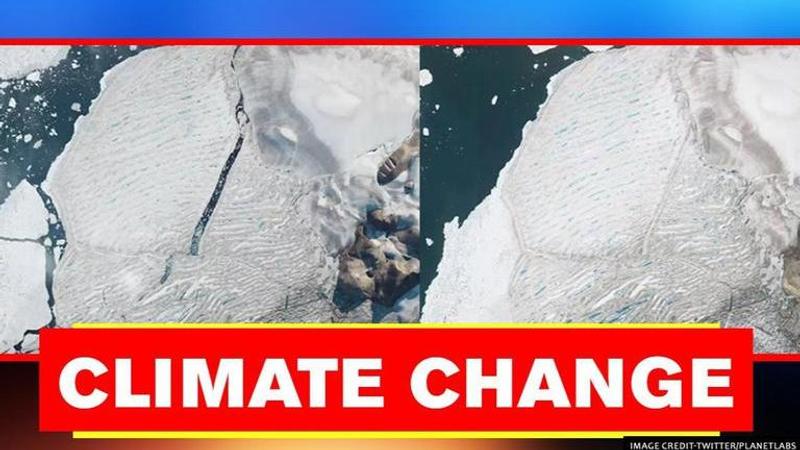Published 04:52 IST, August 14th 2020
Arctic ice split captured in satellite images, ice segments drift towards ocean
According to reports, the ice platform, that split from the ice shelf sometime between July 30-31, formed a free-floating bloc some 80 sq km in the area.

Recent images released by the Planet Earth-observation company show the Milne Ice Shelf in the Arctic as broken. According to reports, the ice platform that split from the ice shelf formed a free-floating bloc some 80 sq km (30 sq miles) in the area. The split occurred sometime between July 30-31.
Ice Shelf deteriorating fast due to Climate Change
The new Images show that just days after splitting from the Milne Ice Shelf, the ice platform itself ruptured in two. After the subsequent rupture, both segments were seen drifting out into the Arctic Ocean.
As per reports, the ice shelf in the Arctic covered 8,600 sq km in the last century. However, due to climate change and global warming that cover has deteriorated to 1,050 sq km.
Besides, further breaks in 2003, 2005, 2008, 2011, 2012, and now in 2020 have reduced its size even more and the shelf covers an area of fewer than 500 sq km now. The Milne shelf itself is now just 106 sq km big.
In the images of the ice shelf shared on Twitter, pools of water can be seen on the shelf which scientists see as problematic because it can create fissures in the ice. The water can push down these fissures and once deep enough, it will have driven the fissure through the base of the shelf thereby causing a split and further weakening the ice shelf. This process is called hydrofracturing.
Updated 04:52 IST, August 14th 2020



